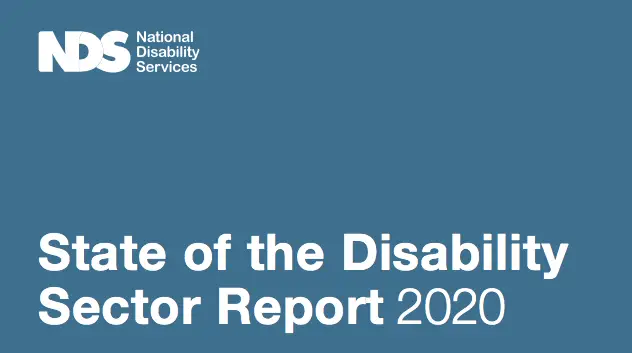Two out of every three disability-service providers had to turn away potential clients over the last year, despite only the same proportion making a profit.
According to the latest overview in the National Disability Services’ State of the Disability Sector Report 2020, there was increased financial viability for providers assisted by the JobKeeper stimulus scheme but ongoing capacity constraints.
The University of New South Wales’ Centre for Social Impact survey of 410 disability service providers last year – released this week – revealed an increased percentage of viable businesses despite the challenges of natural disaster and pandemic.
“Despite the modest increase in sector wide profits – the concern remains that 50 per cent of very small providers are just breaking even or actually making a loss at a time when we are continuing to face challenges in terms of ‘market gaps’ and ensuring that people with disability have choice and control in the services they access,” the report said.
“Most [operators] continue to be focused on delivering already existing programs, as opposed to adding new ones.
“The NDIS will soon have 500,000 participants and, according to some estimates, the disability workforce will need to double in size in the next three years just to keep pace with increasing demand. In short, the sector needs more workers, and those already in it need more incentives to stay.”
The report called for a range of actions to improve the system:
- Increased level of genuine consultation
- A concentrated focus on employment
- Extended school leaver supports
- NDIS price models that reflect true costs
- Implementation of the National Workforce Plan
- Broader account manager support for service providers
- Reduced administrative burden
- An Industry Reference Group to test useability
- Ongoing market stewardship and greater links between the NDIA and NDIS Commission
- A focus on mental health
- Action on Royal Commission findings, and
- A viable National Disability Strategy which is funded appropriately.
Two in three organisations reported making a profit compared to 54 per cent in 2019 – but 31 per cent will only break even or make a loss.
One of the major concerns from the sector concerned the complexity of NDIS systems and processes.
Only 17 per cent of respondents were satisfied with these, with the majority (63 per cent) saying there were too many rules and regulations to follow, a significant jump on previous years.
One provider said the “constant changes in NDIS processes and pricing” made operations very difficult.
“The uncertainty of all the changes makes it impossible to budget appropriately and to respond to services needed for people with disability,” they said.
Another said: “While the Agency seems genuine about addressing provider concerns, pricing pressure remains an ongoing issue for the provision of services and delivery of positive customer outcomes.”
There was, however, a trend of increasing satisfaction with the service policies and direction.
“Overall, there appears to be a gradual increase (off a very low base) in satisfaction with NDIS systems and processes: while only 17 per cent of respondents agreed systems and processes were working well in 2020, this represented significantly higher levels of satisfaction compared to previous years (13 per cent agreed in 2019, 10 per cent in 2018),” the report said.
Navigating the system continued to be an issue for providers.
Advocacy for people with disabilities was growing as a job for providers, they said, in line with a perceived lack of funding for the role.
This also linked into concerns over paperwork, constant changes and bureaucracy stifling the system.
“As in previous years, providers argued that reforms aimed at making things easier were often making operating conditions more difficult on the ground,” the report said.
One provider reported: “Multiple changes to the pricing schedule take up an inordinate amount of administrative time. Every time the NDIA does something to ‘make things easier’ for providers to lodge payment claims, they actually make it harder.”
Another in the survey replied: “Working with NDIS continues to be difficult. This has been further demonstrated in the rollout of pricing for supported employment being nothing like they said it would be during the consultation period.”
Concluding the report, the UNSW authors paid credit to the system.
“In meeting the challenges of this financial year, the disability sector in Australia has shown itself to be resilient, innovative and resourceful,” they said.
“The challenges will likely continue well into 2021 and potentially beyond, as the Australian economy recovers from the impact of the pandemic and the country braces itself for another bushfire season and potential pandemic outbreaks, pending a vaccine.
“A disability sector which can continue to adapt, change and deliver high-quality services will be a sector that will ultimately benefit the people we are here to serve.”










